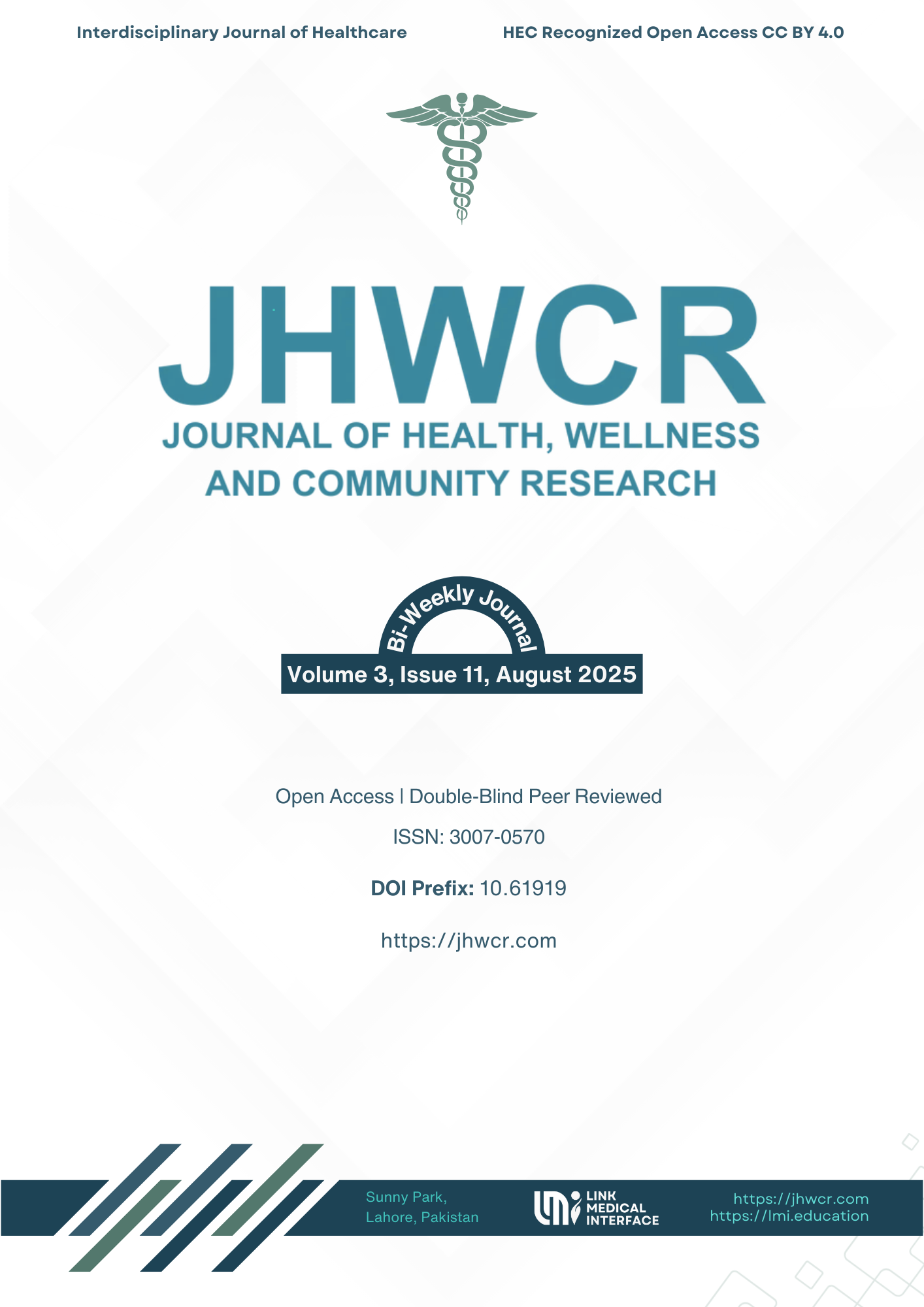In Silico Analysis of Non-Synonymous SNPs in NOS3 Gene
DOI:
https://doi.org/10.61919/1sgy3x36Keywords:
Hypertension, NOS3, nsSNPs, in silico analysis, bioinformatics, endothelial nitric oxide synthase, genetic risk factorsAbstract
Background: Hypertension, a prevalent chronic disorder characterized by blood pressure ≥130/80 mmHg, results from complex interactions between genetic and environmental factors, affecting approximately 20% of the global population and contributing to significant morbidity, including stroke and heart failure. The endothelial nitric oxide synthase (NOS3) gene, encoding eNOS critical for nitric oxide synthesis and vascular homeostasis, harbors numerous non-synonymous single-nucleotide polymorphisms (nsSNPs) potentially linked to hypertension pathogenesis, yet comprehensive characterization remains lacking. Objective: This study aimed to computationally identify and prioritize deleterious nsSNPs in the NOS3 gene using a multi-tool bioinformatics approach to enhance understanding of genetic risk factors for hypertension. Methods: A total of 614 nsSNPs were retrieved from Ensembl (Release 114, May 2025, accession ENSG00000164867) and analyzed using PolyPhen-2 (v2.2.2), SNPs&GO, PhD-SNP (v2.0.6), SIFT (v6.2.1), and PANTHER (v18.0) to predict deleterious effects. Further assessments included stability (I-Mutant v2.0, MUpro v1.1), function (MutPred2 v2.0), conservation (ConSurf v2016), structure (I-TASSER v5.2, TM-align v20220412), and interactions (STRING v12.0, GeneMANIA v3.6.0). Results: Thirty nsSNPs (4.9% of total) were predicted deleterious by all tools, with most reducing protein stability (ΔΔG <0), occurring in conserved regions (ConSurf score 7-9), and inducing structural deviations (RMSD >1 Å). Functional analyses suggested potential disruptions in NO synthesis, supported by interaction networks with genes like NOSIP and CAV1. Conclusion: These findings identify 30 high-confidence deleterious nsSNPs in NOS3, providing a prioritized list for experimental validation and population studies to elucidate their role in hypertension, with implications for personalized risk assessment and therapeutic development.
Downloads
Published
Issue
Section
License
Copyright (c) 2025 Aina Sibghat, Huma Israr, Fajar Baig, Nazia Hadi, Uyoon Sibghat, Naveed Khan (Author)

This work is licensed under a Creative Commons Attribution 4.0 International License.


